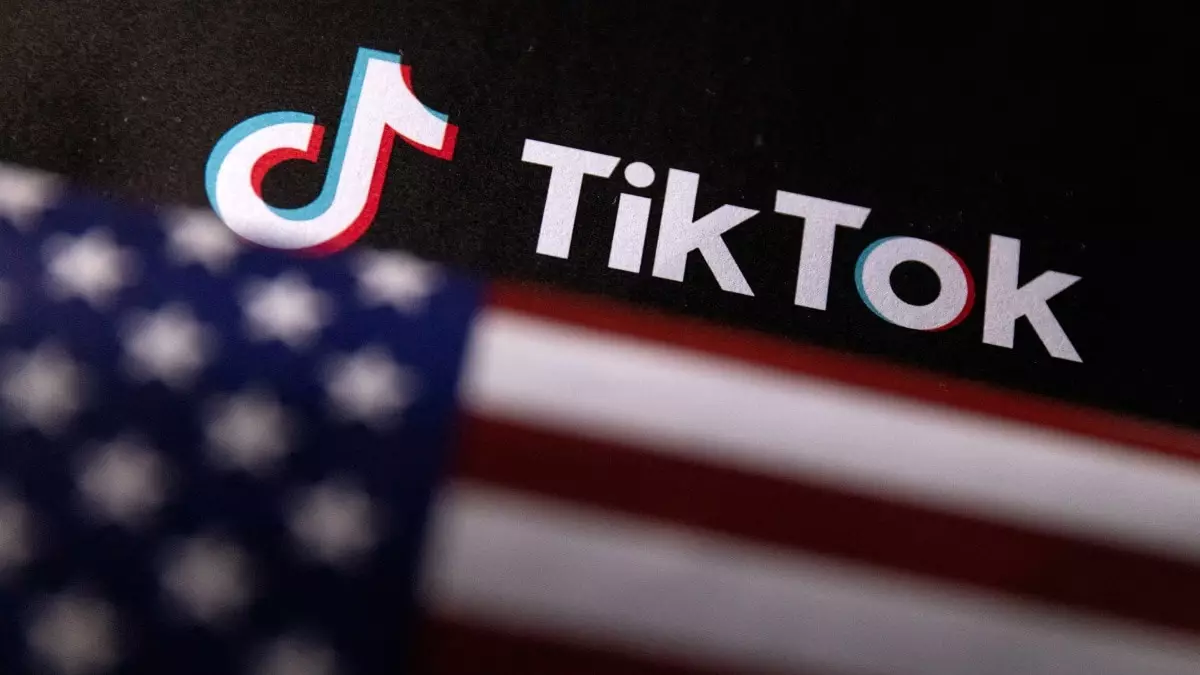The ongoing saga surrounding TikTok in the United States serves as a compelling case study of how technology intersects with geopolitics, corporate interests, and cultural phenomena. As President Donald Trump temporarily paused a ban on the popular social media app, the implications of his decision resonate far beyond just the app itself. This article delves into the ramifications of governmental policy on technological platforms, user behavior, and the market landscape.
In an unexpected turn of events on Thursday, TikTok re-emerged in the US app stores of tech giants Google and Apple, following President Trump’s intervention to extend its operations in the country. The app, beloved by millions for its short, engaging videos, faced an imminent ban due to concerns regarding national security and potential espionage by its Chinese parent company, ByteDance. The executive order signed by Trump sought to delay enforcement of the ban by a substantial window of 75 days, which indicates a recognition of both TikTok’s immense popularity and the complicated political landscape it inhabits.
Despite this reprieve at the presidential level, the tech giants hesitated to reinstate TikTok on their platforms immediately. Analysts speculate that the delay on their part stemmed from a need for assurances that they would be shielded from legal repercussions for hosting the app. This situation illustrates the delicate balance that companies must maintain while operating within a climate of uncertainty regarding regulatory compliance and potential liabilities.
TikTok’s brief interruption raised concerns among its user base, comprised of nearly half of all Americans. A survey could easily reveal that the app has cultivated a sense of community and creative expression that many users are loath to relinquish. Reports by market intelligence firm Sensor Tower reveal that TikTok achieved over 52 million downloads in 2024, showcasing its enduring appeal. With roughly 52% of those downloads coming from the Apple App Store and 48% from Google Play, TikTok has firmly established itself as a critical player in the mobile application landscape.
The consumption of TikTok videos has become an integral part of daily life for many users, leading some to question the motivations behind the proposed bans. Are these measures merely a façade for underlying nationalistic tendencies, or are they justified concerns regarding data privacy? The unpredictable user dynamics surrounding such a popular platform necessitate careful analysis of the intersection of user engagement, data security, and regulatory oversight.
The national security claim underpinning the possibility of a TikTok ban reflects broader anxieties within the US regarding Chinese technology companies. Since the law requiring ByteDance to divest its US operations was enacted last April under President Joe Biden, fears have intensified about how foreign-owned applications might exploit American data. The current framework gives the US government considerable power to ban or force the sale of other Chinese-owned apps, indicating that TikTok may be the first domino in a larger series of regulatory actions.
Moreover, Trump’s assertion that the 75-day period may be extended opens the door to speculation about the ongoing negotiations regarding TikTok’s future. Rumors of interest from potential buyers, including notable figures like former Los Angeles Dodgers owner Frank McCourt, suggest that a possible sale could transform TikTok’s operational landscape entirely. Estimates placing TikTok’s value at around $50 billion underscore the intertwined relationships between technology, investment, and geopolitical tensions.
As TikTok continues to navigate this complex regulatory landscape, its future hangs in the balance, influenced by political decisions, user sentiment, and corporate maneuvers. The chronology of events reflects the intricate web of relationships that influence technological platforms today. The ultimate fate of TikTok in the US will likely set a precedent for the treatment of foreign-owned tech companies moving forward, reinforcing a growing narrative of technological nationalism. In a world increasingly defined by digital connection, the intersection of policy and technology must be tread carefully, as the stakes have never been higher.

